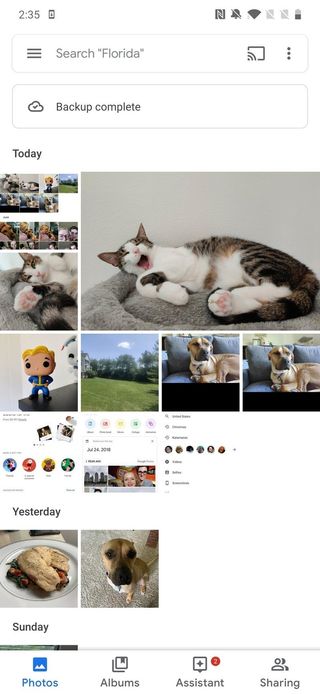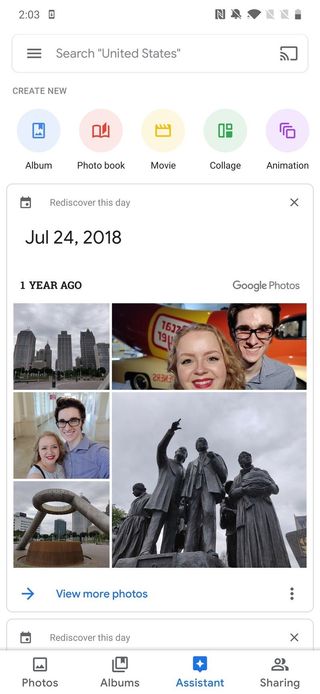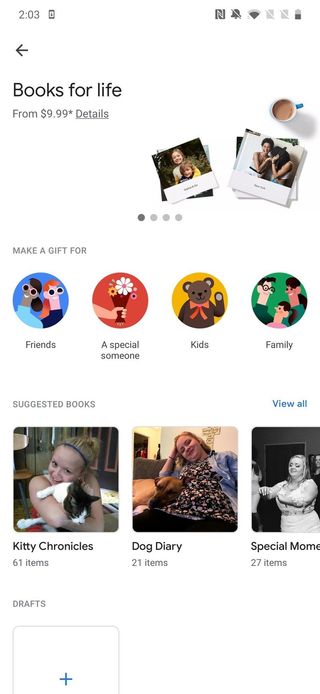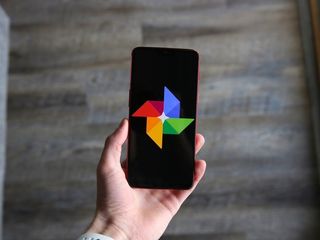How does Google's new Gallery Go compare to Google Photos?

Announced in 2017 alongside the release of Android Oreo, Android Go is a stripped-down version of the Android OS that's designed for sub-$100 smartphones in emerging markets. Along with the lightweight OS, Google's also created Go versions of many of its popular apps, including Google Go, YouTube Go, and Gmail Go, just to name a few.
On July 24, Gallery Go became the latest entry in this series, offering users a lightweight and offline-accessible version of the popular Google Photos app.
What features from Google Photos remain in Gallery Go and which ones had to be cut? Here's how the two apps compare!
What Gallery Go and Google Photos have in common


At their core, both apps are photo galleries for you to browse and edit your pictures. You can view all of your photos at once and have them organized by chronological order, or choose to only view photos that are part of a specific folder.
If your phone has a microSD card slot, you can copy and transfer files to and from the card right into Gallery Go and Google Photos.
Google's editing tools are also available in both apps, allowing you to quickly crop, rotate, and add filters. You can manually mess around with the various options given to you, or use Google's auto-enhance tool to instantly adjust things like brightness and contrast with just one tap.
Similar to Google Photos, Gallery Go can also automatically sort photos for you, albeit on a limited scale. At the end of each day, Gallery Go scans your pictures and organizes them into various categories — such as People, Selfies, Nature, Animals, Documents, and Videos.
Be an expert in 5 minutes
Get the latest news from Android Central, your trusted companion in the world of Android
Things you won't find in Gallery Go



All things you won't find in Gallery Go
While Google has managed to cram a lot of the Google Photos experience into Gallery Go, there are a few key features you won't find in the new app.
First and foremost, Gallery Go is only used for photos that are found locally on your device. Unlike Google Photos, it doesn't show files that are saved in the cloud on your Google account.
While Gallery Go can automatically organize photos into certain categories, it's missing Google Photos' search bar. With the search bar in Google Photos, you can quickly search for photos using people's names, the location where a picture was taken, pet types, etc. In Gallery Go, you're at the mercy of Google's automatic organization with no way to search for a specific type of picture.


Also missing from Gallery Go are some of Google Photos' editing tools. While Gallery Go does have filters and tools for cropping/rotating, you won't find manual sliders for things like exposure, highlights, saturation, warmth, etc.
Rounding out the list of missing features, Gallery Go is lacking:
- Chromecast integration
- Google Lens
- The Google Photos Assistant that automatically creates collages and videos
- An Archive folder
- Support for Google Photo Books
Why Gallery Go is better in some areas

Despite all of that, there are some things that Gallery Go actually does better than Google Photos.
For one thing, Gallery Go is a much smaller app. Weighing in at less than 10MB, it's considerably less than Google Photos' weight of 70MB (according to the 4.15 listing on APK Mirror). Not only does Gallery Go take up less space on your phone, but it should also run much faster thanks to the smaller app size and fewer features.
Perhaps even more important is the fact that you can use Gallery Go offline without the need for any sort of internet connection.
That's a huge perk for users in developing countries, considering that Wi-Fi isn't always available and mobile data can be quite costly.
You'll probably want to keep using Google Photos

At the end of the day, if you live in a developed country and have been using Google Photos, you'll more than likely want to keep on using it.
It's great that Gallery Go exists for users with limited phone hardware and internet access, but outside of those developing parts of the world, it is a worse version of Google Photos in just about every way.
In any case, if you want to try Gallery Go for yourself, you can download it from the Play Store now.
Joe Maring was a Senior Editor for Android Central between 2017 and 2021. You can reach him on Twitter at @JoeMaring1.

